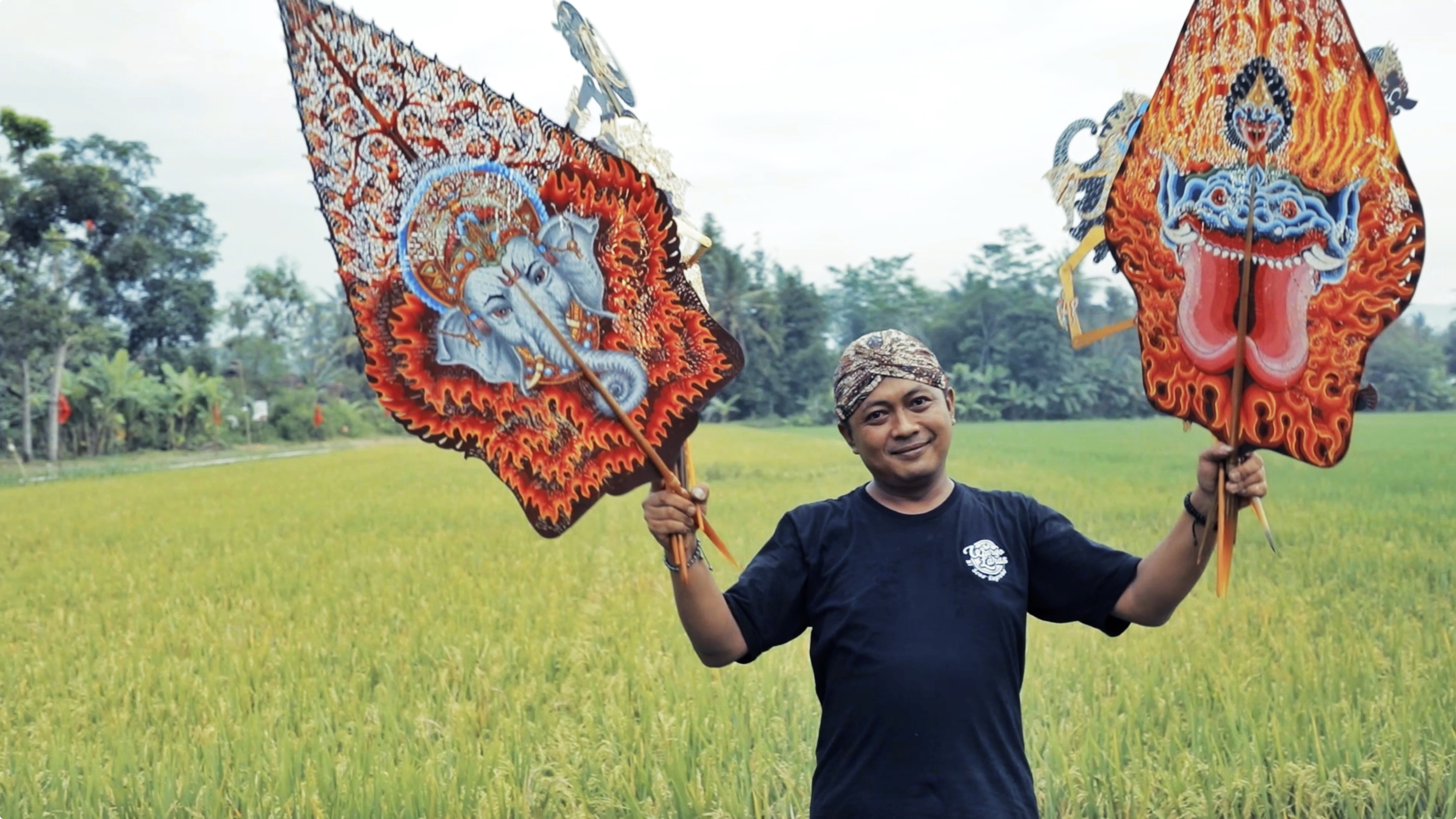

Wayang, meaning "shadow" in Indonesian, is a form of puppet theater art which originated in ancient Southeast Asia.
Keswan Dwinaweka is a local shadow puppeteer and puppet-maker who learned these skills from his father and grandfather at an early age.
Shadow puppets are two-dimensional and are often made of either leather or paper, elaborately painted to represent various characters. The puppets called Wayang Kulit are shadow puppetry figures usually made from buffalo skin.
The price of each Wayang Kulit ranges from 1.5 to two million Rupiah, around (104 to 139 U.S. dollars). On average, Keswan takes two to three weeks to make a puppet which includes handcrafting the costumes, facial features and articulated body parts.
After learning how to sell puppets through Facebook, Keswan's income has increased. Also, social media platforms have helped him promote this folk art in today's modern world.
In Indonesia, shadow puppets mean much more than just entertainment. Puppet plays are often used to convey mythological stories, impart moral lessons and narrate the tales about the good and the evil.
For Indonesians, these plays are a part of their daily routines, guiding them on how to live in this world.
Keswan's entire life spins around Wayang. During the day, when he does not perform, he passes on his skills to his pupils. While playing with his son, Keswan often tells him stories using puppets.
Inspired by the character of Karna from the Hindu epic Mahabharata, Keswan named his son Kunto Radianbasunjaya, which means "the greatest weapon of Karna" and he hopes his son would grow up to be as courageous as a knight.
"I have the responsibility to preserve this art because Wayang belongs to our ancestor," Keswan said.

Copyright © 2018 CGTN. Beijing ICP prepared NO.16065310-3
Copyright © 2018 CGTN. Beijing ICP prepared NO.16065310-3